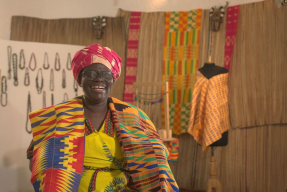When I first met the other Kiva fellows, I asked them where they would be working. I heard Kenya, Peru, Indonesia, and many more places I someday hope to visit. I listened and began to share their excitement, worries and curiosities.
Then they asked me where I would be working on microfinance.
“Um, New York.”

Photo courtesy of Inhabitat
“Um, isn’t that where you’re from?”
Indeed it is. Unlike many of my more impressive colleagues, I came back to New York, with all the amenities to which I’m accustomed, to be a Kiva Fellow.
While I don’t have the opportunity to explore a different culture, I find myself on an exciting frontier of Kiva, an organization that is perpetually searching for inspired and practical solutions to financial problems. As my fellow fellows work to expand and strengthen Kiva around the world, I’m working on a pilot project known as Kiva Zip. The lending model we seek to create will facilitate direct peer-to-peer lending, continue expanding access to capital in the U.S. and abroad, and explore untested hypotheses about the nature of borrowing.
Oh, and did I mention that our loans are made at zero-interest?
The traditional Kiva model has already inspired a new understanding of the concept of lending. By connecting people around the country and around the world, Kiva has shown that small groups of individuals can play the role of banker for those whose success would not generate enough profit for larger banks to take an interest.
What Kiva accomplished for lenders, we now seek to accomplish for borrowers.
Since its creation in November, Kiva Zip has sought to prove that in the right context, small-scale borrowers can outperform the expectations placed upon them by traditional lending criteria. We do not believe that credit scores and cash flow projections are the only ways to predict success.
The context that matters here is the community. There is no doubt that one’s community affects his or her behavior. We believe that with the community, friends and family invested in the success of a business owner, no matter how small, their success and repayment rates will stabilize at a high level.
That is why at Zip we are testing due-diligence models that make use of community partners with an established relationship with the borrower. These community partners are known as trustees. We will encourage individuals to play multiple roles, as borrower, trustee, and lender, so the connections among them increase and their investment in one another’s success grows stronger.
We are seeking a broad spectrum of partners, including advocacy organizations, entrepreneurship classes, chambers of commerce, and religious institutions, as well as individuals who understand where there is need and opportunity.
Kiva Zip loans in the United States do not currently exceed $5,000, but as we provide this stepping stone to entrepreneurs in the States, as well as entrepreneurs in Kenya where Kiva Zip is also active, we will be searching for and finding solutions that will eventually contribute to more opportunity for all.
I encourage you, reader, to not just make a loan, but to think about where these ideas can create a positive impact in your communities, and let us know about it!
Marc Raifman is a Kiva Fellow, working in New York and Chicago this summer with Kiva Zip. If you would like to find out how you can get involved with this innovative program, you can reach him at Marc.Raifman@fellows.kiva.org. You can also find out how you can become a Kiva Fellow or find more information on Kiva and microfinance in general on kiva.org.
PREVIOUS ARTICLE
Kiva Innovations: Sanitation, and Kiva’s elegant solution to an inelegant problem →NEXT ARTICLE
In honor of Mandela Day go forth and make a difference →













